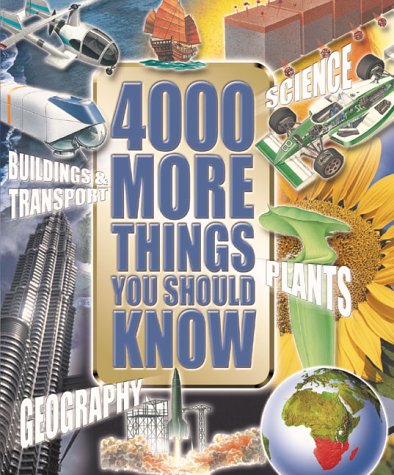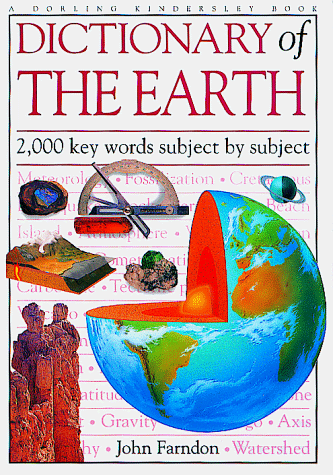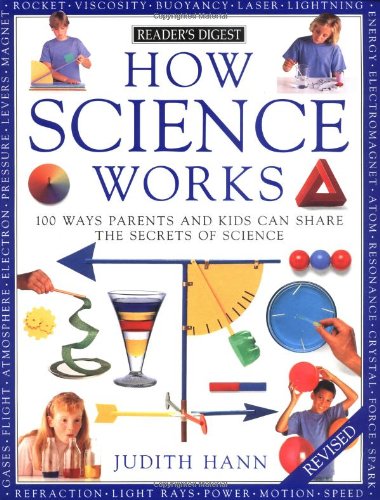-
What Do We Know About Stars and Galaxies?
John Farndon
Paperback (Raintree, Aug. 1, 2011)This book explains how the Universe is made up, from stars and their systems to galaxies and globular clusters. W
W
-
Extreme Fires and Floods
John Farndon
eBook (Hungry Tomato ®, Aug. 1, 2017)In just a few seconds, a spark can turn a forest into a rapidly spreading inferno of intense heat and suffocating smoke. Firefighters try to control the wildfire—a battle that might last for months. Water can be used to fight wildfires, but too much water can cause deadly floods. Floods reduce land to swamp and sweep away houses and bridges. In their wake, they leave food shortages, contaminated drinking water, and diseases like cholera and typhus. Follow the scorched trail of the worst wildfires ever, learn what causes flash floods, and discover the technology that helps predict these devastating disasters. V
V
-
Weather
J. Farndon
Paperback (Dorling Kindersley Publishers Ltd, Feb. 20, 1997)None
-
1000 facts on human body
John Farndon
Hardcover (Barnes & Noble Books, March 15, 2003)2003. Author: John Farndon. Publisher: Barnes & Noble Books. 224 pages.
-
4000 Things You Should Know About
John Farndon
Hardcover (Miles Kelly Publishing Ltd, March 1, 2000)One volume encyclopedia with pictures by Miles Kelly Publishing.
-
Dictionary of the Earth
John Farndon
Hardcover (DK CHILDREN, March 1, 1995)Provides informative definitions of more than two thousand words and places each within a context example, in a subject-categorized reference for enthusiastic young scientists. Y
Y
-
Extreme Volcanoes
John Farndon
eBook (Hungry Tomato ®, Aug. 1, 2017)The molten rock just under Earth's solid crust sometimes erupts suddenly and violently, causing streams of red-hot lava and scorching high-speed avalanches called pyroclastic flows. Volcanoes can bury entire cities in ash, poison the air with suffocating gases, trigger earthquakes and tsunamis, and drastically alter our climate. Witness the world's most extreme volcanic disasters throughout history, from the Yellowstone supervolcano to Vesuvius and Krakatoa, and find out what could happen if they erupt again. Learn how volcanoes form, what causes them to erupt, and why the benefits may outweigh the dangers for the people who live near them. Discover the science and technology that could help volcanologists save lives by predicting future devastating explosions. V
V
-
How science works
John Farndon
Paperback (Readers Digest, July 19, 1999)An exciting and colorfully illustrated collection of one hundred science experiments and projects from a best-selling series offers a unique way for children and parents to come together in a fun exploration of the wonders of science. Reprint. T
T
-
Exploring Science: Planet Earth: Continents, Oceans, Climate, Geology; With 19 Easy-To-Do Experiments and 250 Exciting Pictures
John Farndon
Hardcover (Armadillo, Feb. 7, 2015)How was the Earth formed and what is it made up of? Discover the forces that shape the land, with exciting experiments to explain the science. Y
Y
-
How the Earth Works
John Farndon
Paperback (Dorling Kindersley Publishers Ltd, Aug. 26, 1999)Focusing on questions about the earth such as "What lies at the centre of the Earth?", "Why do continents move?" and "Why do rivers bend?" this book features simple, hands-on experiments and projects which use safe everyday equipment that let the reader discover for themselves the way the Earth works. It is also possible to create your own "home laboratory" with everyday materials from your home and garden. Y
Y
-
1000 Things You Should Know About: The Human Body
John Farndon
Paperback (Miles Kelly Publishing Ltd, March 1, 2000)This book is packed with stunning colour photographs and diagrams. Together with a detailed and expertly written text, it provides an accurate, comprehensive account of the topic of the Human Body for key stage 3 students. Main text is supported by a series of fact files which provide information at a glance: history file, future file, test and fact files. It covers: cells, tissues and body systems; breathing; heart, blood and circulation; food and digestion; skeleton, joints and muscles; brain and nervous system; senses; hormones; and reproduction.
